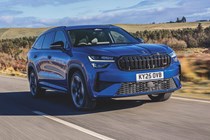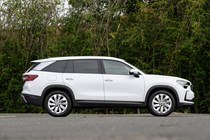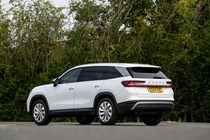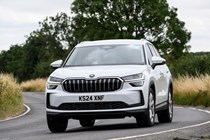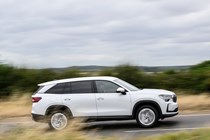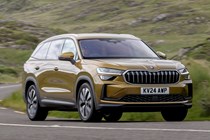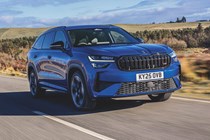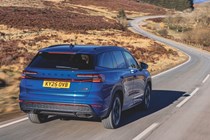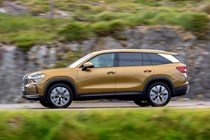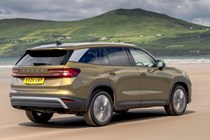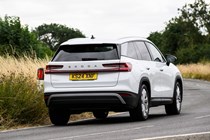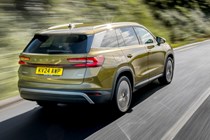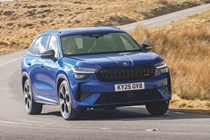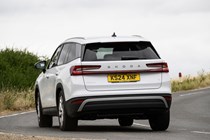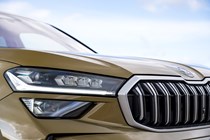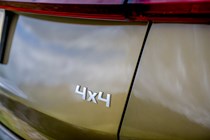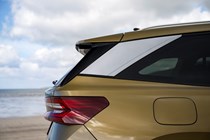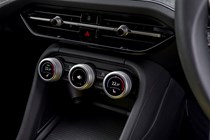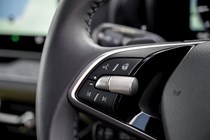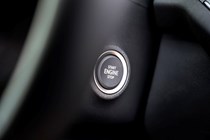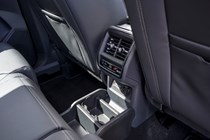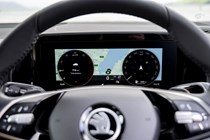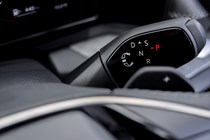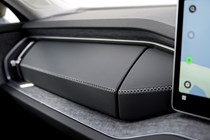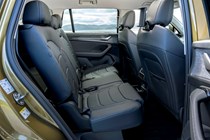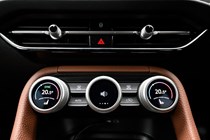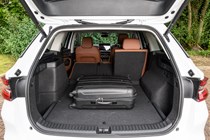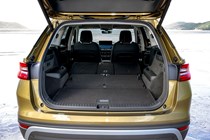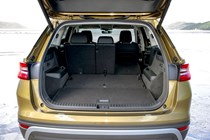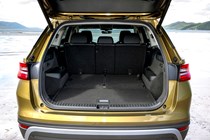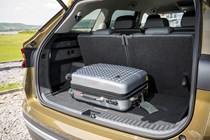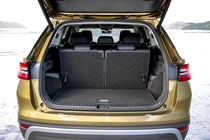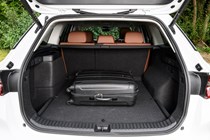
Skoda Kodiaq running costs and reliability

Miles per pound (mpp) ⓘ
| Petrol engines | 4.9 - 6.9 mpp |
|---|---|
| Diesel engines | 5.6 - 6.8 mpp |
| Plug-in hybrid petrol engines * | 6.7 - 7.2 mpp |
Fuel economy ⓘ
| Petrol engines | 33.3 - 47.3 mpg |
|---|---|
| Diesel engines | 44 - 53.3 mpg |
| Plug-in hybrid petrol engines * | 46 - 49.1 mpg |
- Mild-hybrid petrol with fuel-saving tech
- Long electric range from plug-in hybrid
- Some early reliability concerns
What are the running costs?
Regardless of which engine you choose, the running costs of the Skoda Kodiaq are good for a car of this size. Though there’s no self-charging hybrid variant – which is offered by rivals such as the Nissan X-Trail and Kia Sorento – we were impressed by the fuel economy of the entry-level 1.5-litre petrol model.
Equipped with mild-hybrid technology, this TSI e-Tech engine switches itself off as soon as you lift off the throttle to save fuel. It’s one of the most effective cars of this type that we’ve driven for fuel-saving, and the result over a long-distance run was a remarkable 50mpg, an exceptional figure for a large seven-seat SUV, and more than various full hybrids of this type that we’ve driven.
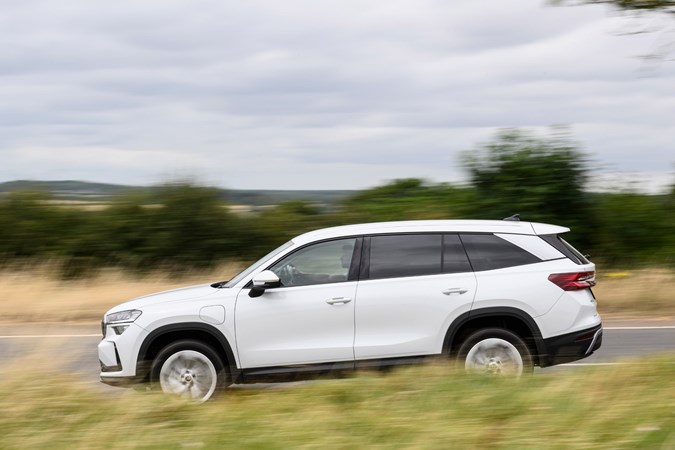
The plug-in hybrid Kodiaq iV also offers buyers tantalisingly low running costs, since its sizeable 25.7kWh battery pack means it can travel up to 75 electric miles per charge according to the WLTP figures. During mixed driving with the car locked into ‘EV’ mode, we managed 63 miles, an exceptional real-world figure. In everyday city driving, you should be able to get close to that claimed figure without too much effort, though accelerating hard, driving at higher speeds and travelling fully loaded will all reduce that electric-only distance.
The Kodiaq is also one of few plug-in hybrids that can be DC rapid charged (such as at a motorway service station), meaning you can top up the battery in under half an hour. A domestic AC connection will need longer – at least 2.5 hours – but that would be easily done overnight. So if you can charge at home using a cheap EV electricity tariff and have a commute that falls with the electric driving range, this Kodiaq will be very cheap indeed to run.
The 2.0-litre petrol Kodiaq models don’t have any form of hybrid tech, and in our experience you’ll be looking at more like 30-35mpg in mixed driving. The 2.0-litre diesel Kodiaqs, meanwhile, are capable of well over 40mpg even at fast motorway speeds, and should give you this kind of figure overall in mixed driving if treated with reasonable sympathy. Lots of very short journeys won’t be efficient, however, as we’ve found with our Kodiaq long-term test car.
Servicing and warranty
Skoda’s standard warranty lasts for three years and 60,000 miles. That’s a long way behind Hyundai’s five-year, unlimited-mileage warranty or Kia’s seven-year / 100,000 miles of cover. You can protect the Kodiaq further with an official Skoda extended warranty, with four- and five-year options available at extra cost.
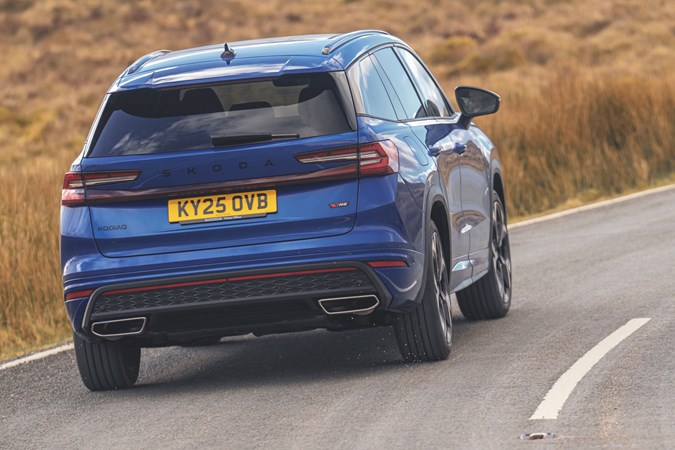
Skoda also offers competitive servicing packages, with the firm currently promoting a ‘Skoda all-in‘ package for cars aged three to six years old that includes two services, two years of roadside assistance and up to two years’ warranty. The cost of a two-year service package on a Kodiaq works out as roughly £500 if done through an official Skoda dealer.
Reliability
- Early cars have suffered with buggy software
- We’ve also experience sensor failures
- Issues fixed under warranty
The second-generation Kodiaq is still a relatively new car at the time of writing (June 2025), so hopefully the early software and electronic issues we’ve experienced in various test cars are early-build issues that will soon be smoothed out for later production vehicles. However, this is a common theme across the entire Volkswagen Group at the moment – the company really needs to get a grip on its quality control, especially when it comes to new vehicle launches.
To be clear, the Kodiaq is such a comprehensively excellent SUV in other areas that this doesn’t – yet – put us off recommending one. But you should perhaps be prepared for some unscheduled dealer visits.
Already own one? Why not help other readers by leaving a Skoda Kodiaq owner review. The previous-generation model scores an impressive 4.5 our of 5 among our readers, so here’s hoping the new one can ultimately live up to this quality.
Ongoing running costs
| Road tax | £195 - £620 |
|---|---|
| Insurance group | 18 - 31 |
Get an insurance quote with

|
|


